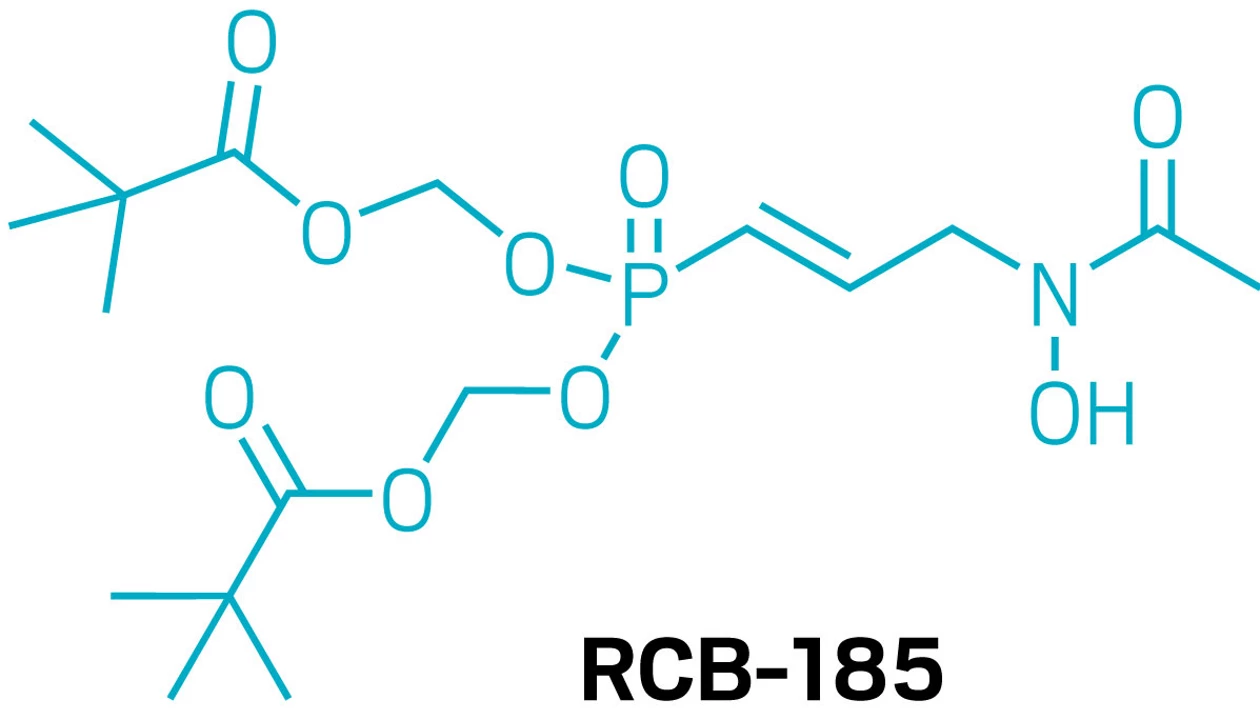When fosmidomycin was first described in 1978, its antibiotic and antiparasitic properties had scientists hopeful that they had a tuberculosis (TB) and malaria treatment on hand. Unfortunately, clinical trials went nowhere, and the compound was abandoned for its unacceptable cure rates.
Yet fosmidomycin’s mechanism of action was still worth studying. It targets the methylerythritol phosphate (MEP) pathway, which is conserved across several unrelated disease-causing organisms but isn’t found in humans. That’s why Cynthia Dowd, an organic medicinal chemist and chemistry department chair at the George Washington University, has spent over a decade engineering fosmidomycin into chemical analogs that could prove to be more effective drugs.
Dowd presented her lab’s progress in developing variants of fosmidomycin on Monday at the American Chemical Society Fall 2025 meeting during a session organized by the Division of Biochemistry and Chemical Biology. The data she presented showed that some of the variants her team developed are far more potent at treating TB and malaria.
Fosmidomycin disrupts the MEP pathway by interfering with an enzyme, 1-deoxy-D-xylulose 5-phosphate reductoisomerase (Dxr), that is active early on in the pathway. “It’s been shown genetically and chemically that if you shut down this enzyme then the whole pathway stops and the bugs die,” Dowd said.
But while fosmidomycin does a decent job at shutting down Dxr, “it’s not the greatest drug in the world,” Dowd said. “The pharmacokinetic properties kind of stink.” Yet no other drugs target this pathway, so if fosmidomycin could be made more effective, it could help overcome growing levels of drug resistance in malaria and TB infection. The first approach Dowd and her lab used to make fosmidomycin more effective was to engineer it into a prodrug—a molecule that gets converted into a pharmacologically active compound after it reaches its target. A prodrug approach would help overcome one of the challenges unique to treating TB: its thick and waxy cell wall.
Dowd and her team used fosmidomycin as a backbone and then engineered it with lipophilic phosphonate esters to create several prodrug candidates. “Basically, you take a very polar molecule and you mask it by making it greasy. Then those molecules can, in fact, cross the mycobacterial cell wall and you can kill the bug,” she explained.
From there, Dowd and her team began engineering other parts of the molecule to make it even more effective by growing it so that it inhibited a secondary binding site in the Dxr enzyme. That resulted in RCB-185, which contains the lipophilic phosphonate ester, along with an added methyl group and double bond compared with fosmidomycin.
The data Dowd presented showed that RCB-185 was drastically more effective at killing TB and malaria than fosmidomycin in cell culture and mouse models, even when the pathogen strains were resistant to other drugs. That has people excited.
Peter Tonge, a chemical biologist at Stony Brook University, said that Dowd is an expert at designing prodrugs to get molecules inside of a pathogen. Reworking fosmidomycin has a lot of potential, he said. “Even drugs that fail often have many of the properties that you need to be a successful drug candidate, and so understanding what the liabilities were and fixing those liabilities is a really smart idea.”
But even though the MEP pathway and its Dxr enzyme aren’t found in humans, “that doesn’t mean that your molecules don’t bind to other proteins,” Tonge said. “When you treat bacterial infection, often you dose at very high levels. And so you have to make sure that your compounds are safe.”
Dowd said she has tested RCB-185 and other compounds she has developed on human cells and has shown there’s no cytotoxic activity. But she still thinks there’s more engineering to do before the lab has a fosmidomycin variant suitable for clinical trials.
Chemical & Engineering News
ISSN 0009-2347
Copyright ©
2025 American Chemical Society
